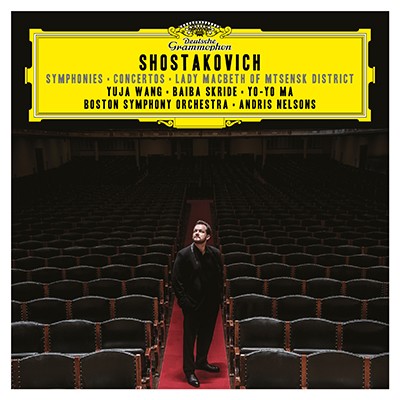Symphony No. 12 in D minor 'The Year 1917'
op. 112 (1961)3(III=picc).3.3.3(III=dbn)-4.3.3.1-timp.perc:tgl/SD/BD/cym/tam-t-strings(16-20.14-18.12-16.12-16.10-14)
Abbreviations (PDF)
VAAP
Even the composer himself apparently felt unconvinced by his Twelfth Symphony and his detractors have been quick to pour scorn on it as a piece of crudely pictorial socialist-realism, in a baldly derivative film-music idiom and mostly designed to please the composer’s official masters the year after he had unexpectedly joined the Communist Party (a move which had exasperated and disillusioned many of his friends). However, to listen to this symphony in a great performance under a conductor such as Yevgeny Mravinsky is to realise that even when Shostakovich apparently compromised himself, he was still capable of tremendous feats of orchestral mastery and symphonic narrative. It is possible that when the dust has settled on this period of history and the confusing and highly personal history of Shostakovich’s political manoeuvres at this time, we will begin to hear this music in another way and take heed of its many strengths as well as its much discussed weaknesses.
The four movements of this symphony – dedicated to the memory of Lenin - depict in graphic movietone imagery the crucial revolutionary events of October 1917: Petrograd in the grip of revolutionary tumult and fervour; the Gulf of Finland at dawn on the day of revolution; the firing of shots towards the Winter Palace from the battleship ‘Aurora’; and the triumph of Lenin and his fellow Bolsheviks.
Note by Gerard McBurney.

Boston Symphony Orchestra / Andris Nelsons
DG 4866649
